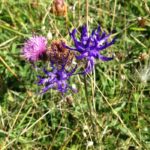 The National Vegetation Classification System (NVC) is a detailed habitat classification system based on floristic differences in plant species abundance and frequency (a phytosociological system). The basic unit of the NVC is an NVC community type, which can be further sub-divided into sub-communities.
The National Vegetation Classification System (NVC) is a detailed habitat classification system based on floristic differences in plant species abundance and frequency (a phytosociological system). The basic unit of the NVC is an NVC community type, which can be further sub-divided into sub-communities.
The NVC is a frequently used tool in the evaluation and monitoring of botanically important habitats within nature conservation and the planning system. It has become the go-to method for the Phase 2 assessment of botanically interesting vegetation affected by proposed development, following Extended Phase 1 habitat survey and PEA.
It is most applicable to semi-natural habitat types, including grasslands, and may not be appropriate in understanding the conservation value of highly modified habitats such as those found on brownfield or post-industrial sites (which do not readily conform).
NVC survey can involve the collection of quadrat data from a homogeneous stand of vegetation. The resulting data can then used to construct floristic tables and/or be analysed by computer software as aids to confirming the NVC affinities of the vegetation community.
Past Projects using the NVC.
New Holiday Cabin Park (Norfolk Breckland)
Lowland Meadow (Northamptonshire)
Ancient Woodland (Kent)
Woodlands and Calcareous Grasslands (Lincolnshire Wolds)
Acid Grassland/Granite Outcrop (Charnwood Forest)
Peatland Habitats (Cambrian Mountains)